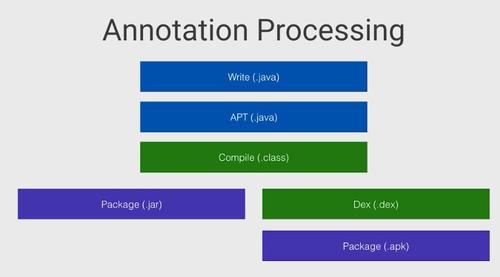
记得Romain Guy在一次DroidCon上曾说过:
As I understand, modern java development are all about wrting annaotation Processors and not wrting code anymore…
全场观众大笑。。。
这之后经常看到Jack Wharton在演讲中提到”My Hypothetical Annotation Processor…” ,后来才意识到像Retrofit,ButterKnife这些都是使用了注解的方式。
1. 原理介绍
Annotation Processoring Tool是javac的一部分,它会在编译期生成新的.java文件(不是class文件)
定义一个Annotation的语法如下:
@Documented
@Target(ElementType.TYPE) //这说明生成的注解能够放在class,interface,enum等类型上。不能放在method上
@Retention(RetentionPolicy.SOURCE) //指明在编译器有效
public @interface Builder { //@interface就像class,interface,enum一样
}
2.Annotation Processor是生成新代码的实现类
大致的实现例如:
public class PojoStringProcessor extends AbstractProcessor {
private static final String ANNOTATION = "@" + PojoString.class.getSimpleName();
private static final String CLASS_NAME = "StringUtil";
private Messager messager; //有点像Logger,用于输出信息
private Filer filer //可以获得Build Path,用于生成文件
//public构造函数不写也会自动加上
// init做一些初始化操作
@Override
public synchronized void init(ProcessingEnvironment processingEnv) {
super.init(processingEnv);
messager = processingEnv.getMessager();
this.filer = processingEnv.getFiler();
}
//apt在检查被注解的class时,会返回你需要的注解类型
@Override
public Set<String> getSupportedAnnotationTypes() {
return immutableSet.of(Builder.class.getCanonicalName());
}
//java7,java8 有点像android的targetSdk Version
@Override
public SourceVersion getSupportedSourceVersion() {
return SourceVersion.latestSupported();
}
//重点
@Override
public boolean process(Set<? extends TypeElement> annotations, RoundEnvironment roundEnv) {
ArrayList<AnnotatedClass> annotatedClasses = new ArrayList<>();
for (Element element : roundEnv.getElementsAnnotatedWith(PojoString.class)) {
TypeElement typeElement = (TypeElement) element;
if (!isValidClass(typeElement)) {
return true; //apt找到的所有被注解的class
}
try {
annotatedClasses.add(buildAnnotatedClass(typeElement));
} catch (IOException e) {
String message = String.format("Couldn't process class %s: %s", typeElement,
e.getMessage());
messager.printMessage(Diagnostic.Kind.ERROR, message, element);
e.printStackTrace();
}
}
try {
generate(annotatedClasses);
} catch (IOException e) {
messager.printMessage(Diagnostic.Kind.ERROR, "Couldn't generate class");
}
return true;
}
}
几个重要的方法解释下:
- roundEnv: apt分两步:1. apt发现被注解的代码,提供给我们写的processor,后者生成新的java代码(apt还未处理这部分新代码)。
- apt发现新代码,提供给我们的Processor,不生成新代码。完成processing。(后面提供给编译)
ServiceLoader Discovery File(这货在jar中)
//META-INFO/services/javax.annotations.processing.Processor文件中写入
com.example.annotation.BuilderProcessor// class包名
//这里声明所有的processor,这里可以include别的processor
语法:
app/build.gradle
dependencies {
compile project(': annotation')
apt project (':processor')
}
//apt 表示processor中的方法不会带到distributed apk中,方法数不用担心了
//https://bitbucket.org/hvisser/android-apt
//https://github.com/tbroyer/gradle-apt-plugin
继承AbstractProcessor,必须要有一个无参public构造函数
3. 生成新的java方法
首先添加依赖,square的javaPoet
假设想生成的代码是这样的
public final class UserBuilder{
private String userName;
public UserBuilder username(String username){
this.username = username;
returen this;
}
}
生成变量
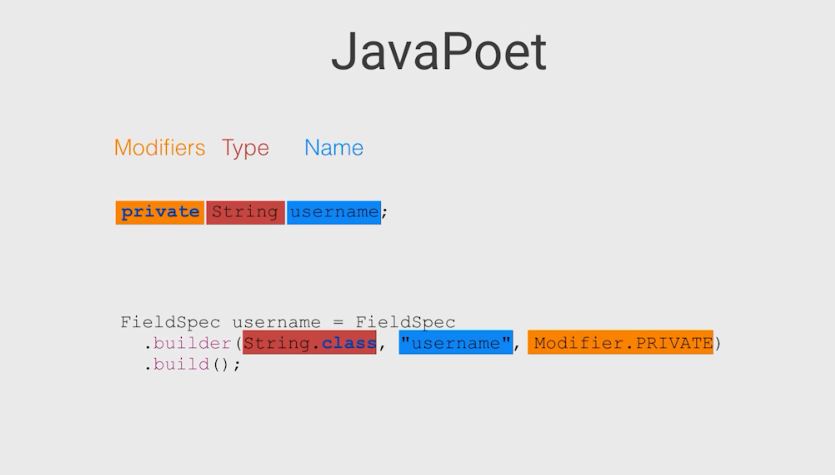
生成方法
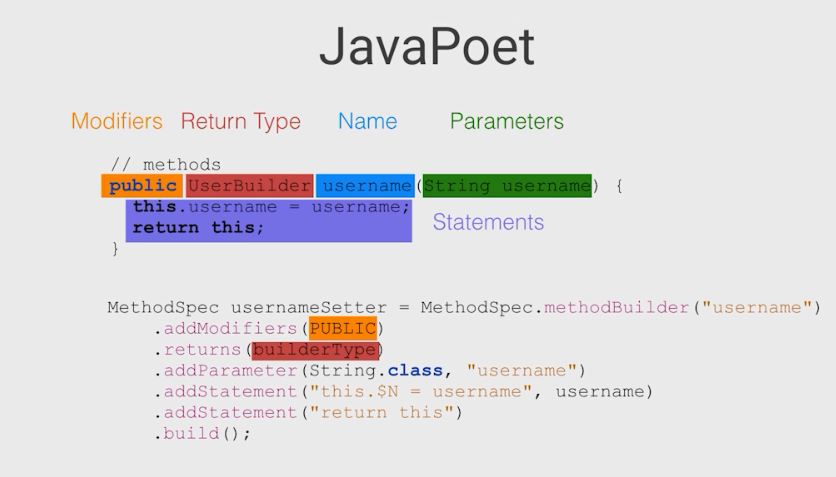
生成class:
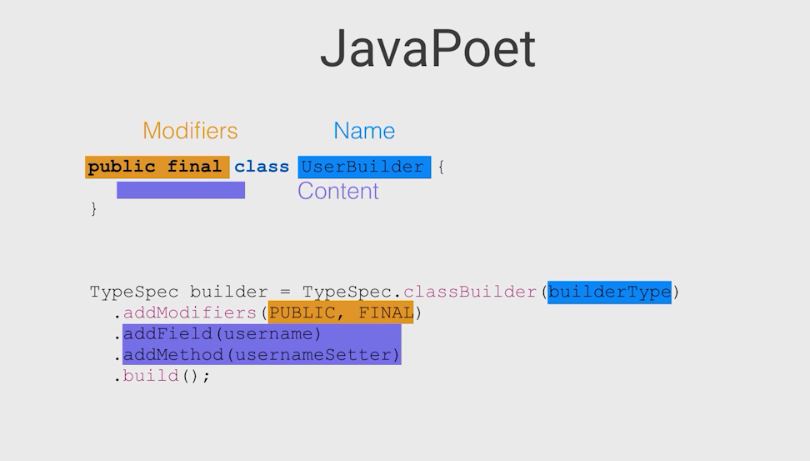
直接截图了
- 主要步骤
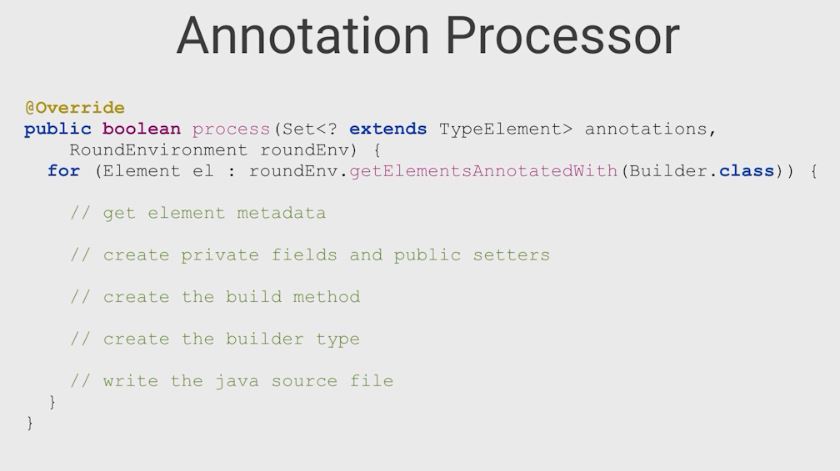
meta_data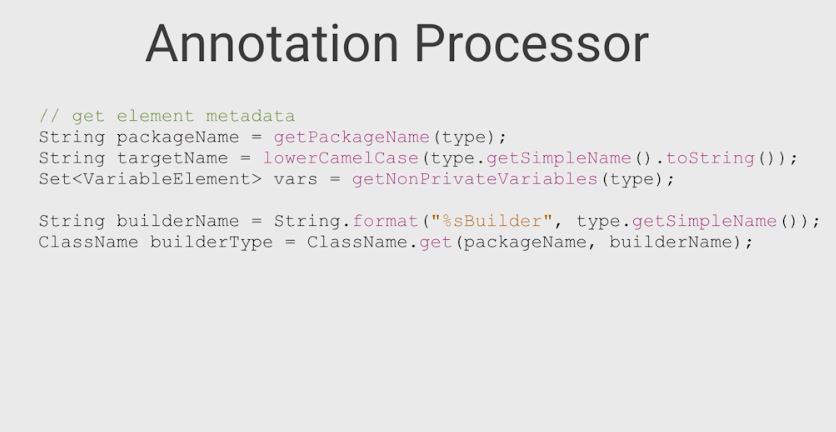
- 生成private field和public setter:
FiledSpec username = FiledSpec.builder(String.class,”username”,Modifier.PRIVATE).build();
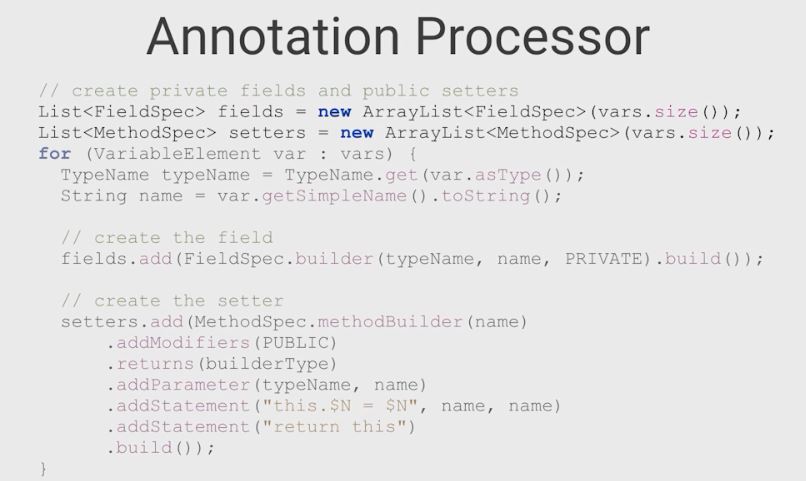
生成build method
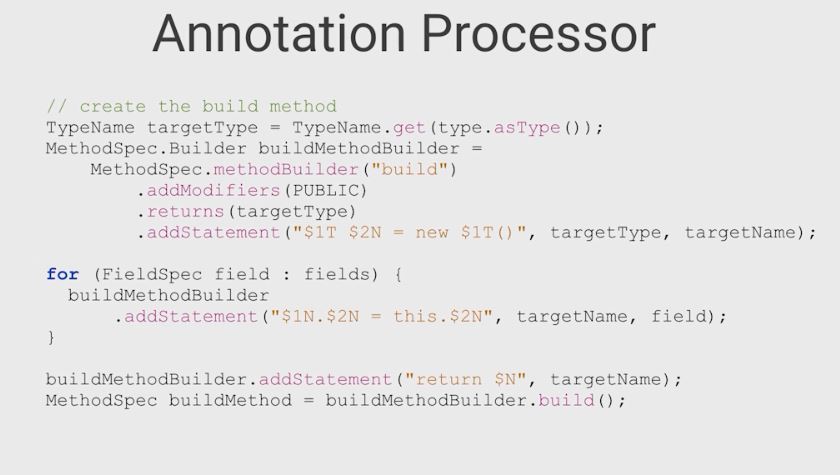
生成builder
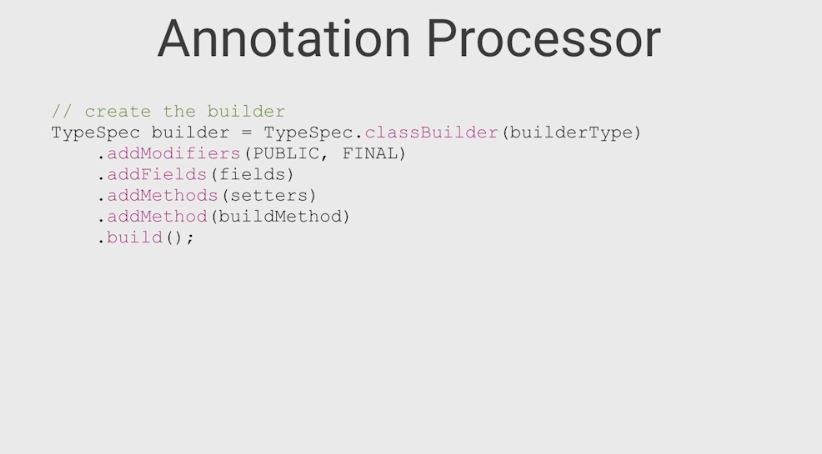
写java文件:
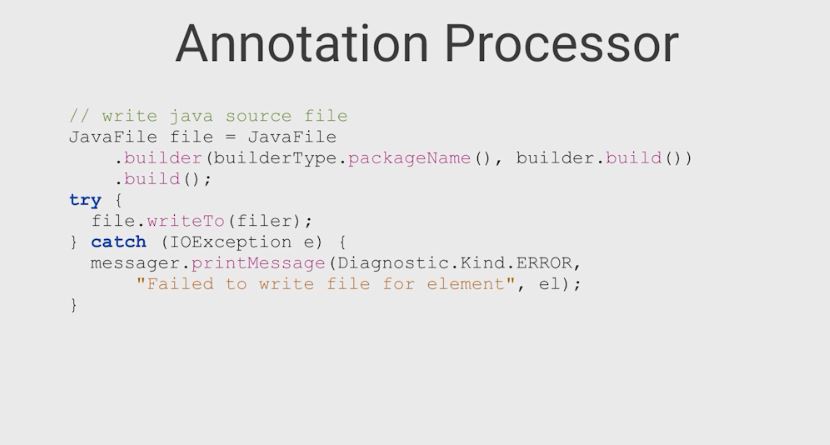
4. 注意的地方
dnot’t put annotation processors in a compile configuration, use the Android Apt plugin。
if you using jack, jack has support for annotation processors.
if it’s only a java, could use the Gradle Apt Plugin
我们写的processor不会带到生成的apk中,但生成的代码会。这也正是想要的目的。
updates
Instagram的json parser也是使用了annotationProcessor在编译期生成代码 很多gson这样的解析器都使用了大量的反射,所以相比手写的构造函数要慢很多。